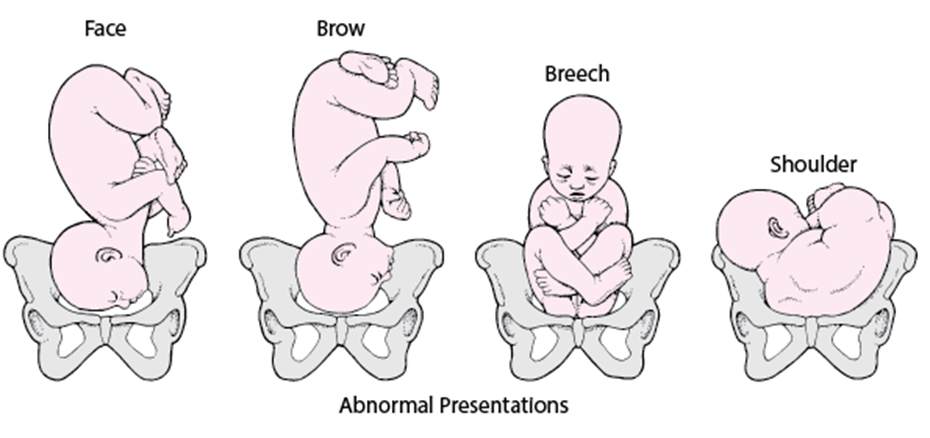A nurse is planning care for a client in active labor whose fetus is in an occipital brow presentation. Which of the following complications should the nurse anticipate as a result of this fetal presentation?
Umbilical cord prolapse
Precipitous labor
Hypertonic uterine dysfunction
Prolonged labor
The Correct Answer is D
The correct answer is D. Prolonged labor
A. Umbilical cord prolapse is more commonly associated with breech presentations or other abnormal fetal positions. It is not a typical complication of occipital brow presentation.
B. Precipitous labor refers to an unusually rapid labor, and it is not a typical complication associated with occipital brow presentation. Prolonged labor is more likely.
C. Hypertonic uterine dysfunction involves excessive uterine contractions, and it is not specifically associated with occipital brow presentation. It is more commonly associated with other factors, such as maternal anxiety or use of oxytocin.
D. Prolonged labor is a complication that can be associated with occipital brow presentation.
Occipital brow presentation involves the fetal head being partially extended, and it can lead to difficulties in descending through the birth canal. This may result in a prolonged labor process.

Nursing Test Bank
Naxlex Comprehensive Predictor Exams
Related Questions
Correct Answer is B
Explanation
The correct answer is B.
A. Place warm, moist packs on the breasts: Warm, moist packs can increase blood flow and may actually stimulate milk production. This is not an appropriate intervention for lactation suppression.
B. Apply cabbage leaves to the breasts: This is the correct intervention. Cabbage leaves have been traditionally used to help reduce engorgement and suppress lactation. The mechanism is not fully understood, but it is believed that compounds in cabbage may help decrease milk supply.
C. Wear a loose-fitting bra: Wearing a loose-fitting bra can help reduce friction and discomfort, but it is not a specific intervention for lactation suppression.
D. Put green teabags on the breast: Green teabags are not commonly recommended for lactation suppression. Cabbage leaves are more widely accepted for this purpose.
Correct Answer is A
No explanation
Whether you are a student looking to ace your exams or a practicing nurse seeking to enhance your expertise , our nursing education contents will empower you with the confidence and competence to make a difference in the lives of patients and become a respected leader in the healthcare field.
Visit Naxlex, invest in your future and unlock endless possibilities with our unparalleled nursing education contents today
Report Wrong Answer on the Current Question
Do you disagree with the answer? If yes, what is your expected answer? Explain.
Kindly be descriptive with the issue you are facing.
